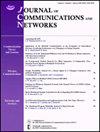基于混合和对抗训练的信号增强方法具有更好的鲁棒性和泛化性
IF 3.2
3区 计算机科学
Q2 COMPUTER SCIENCE, INFORMATION SYSTEMS
引用次数: 0
摘要
越来越多的深度学习方法被应用到无线通信系统中。然而,真实信号数据的收集带来了挑战。此外,由于神经网络的脆弱性,对抗性攻击严重威胁到基于深度学习模型的通信系统的安全性。传统的信号增强方法通过旋转和翻转等变换来扩展数据集,但这些方法对模型的对抗鲁棒性提高甚微。然而,提高对抗鲁棒性的常用方法,如对抗训练,不仅有很高的计算开销,而且可能导致干净样本上的准确性下降。在这项工作中,我们提出了一种称为对抗和混合信号增强(AMSA)的信号增强方法。该方法可以在扩展数据集的同时提高模型的对抗鲁棒性,并且不影响模型的泛化能力。它将对抗训练与数据混合相结合,然后在由原始样本和对抗样本组成的扩展数据集中插入选定的样本对,形成新的样本,从而产生更多样化的数据。利用基于卷积神经网络(CNN)、长短期记忆(LSTM)、卷积长短期深度神经网络(CLDNN)和变压器的自动调制识别(AMR)模型,在RML2016.10a和RML2018.01a数据集上进行了实验。并比较不同样本数场景下的性能。结果表明,与使用对抗训练相比,AMSA可以使模型获得相当甚至更好的对抗鲁棒性,并且减少了模型在干净数据上泛化性能的下降。本文章由计算机程序翻译,如有差异,请以英文原文为准。
Signal augmentation method based on mixing and adversarial training for better robustness and generalization
More and more deep learning methods have been applied to wireless communication systems. However, the collection of authentic signal data poses challenges. Moreover, due to the vulnerability of neural networks, adversarial attacks seriously threaten the security of communication systems based on deep learning models. Traditional signal augmentation methods expand the dataset through transformations such as rotation and flip, but these methods improve the adversarial robustness of the model little. However, common methods to improve adversarial robustness such as adversarial training not only have a high computational overhead but also potentially lead to a decrease in accuracy on clean samples. In this work, we propose a signal augmentation method called adversarial and mixed-based signal augmentation (AMSA). The method can improve the adversarial robustness of the model while expanding the dataset and does not compromise the generalization ability. It combines adversarial training with data mixing and then interpolates selected pairs of samples to form new samples in an expanded dataset consisting of original and adversarial samples thus generating more diverse data. We conduct experiments on the RML2016.10a and RML2018.01a datasets using automatic modulation recognition (AMR) models based on convolutional neural networks (CNN), long short-term memory (LSTM), convolutional long short-term deep neural networks (CLDNN), and transformer. And compare the performance in scenarios with different numbers of samples. The results show that AMSA allows the model to achieve comparable or even better adversarial robustness than using adversarial training, and reduces the degradation of the model's generalization performance on clean data.
求助全文
通过发布文献求助,成功后即可免费获取论文全文。
去求助
来源期刊
CiteScore
6.60
自引率
5.60%
发文量
66
审稿时长
14.4 months
期刊介绍:
The JOURNAL OF COMMUNICATIONS AND NETWORKS is published six times per year, and is committed to publishing high-quality papers that advance the state-of-the-art and practical applications of communications and information networks. Theoretical research contributions presenting new techniques, concepts, or analyses, applied contributions reporting on experiences and experiments, and tutorial expositions of permanent reference value are welcome. The subjects covered by this journal include all topics in communication theory and techniques, communication systems, and information networks. COMMUNICATION THEORY AND SYSTEMS WIRELESS COMMUNICATIONS NETWORKS AND SERVICES.

 求助内容:
求助内容: 应助结果提醒方式:
应助结果提醒方式:


